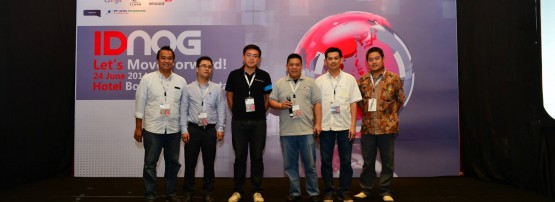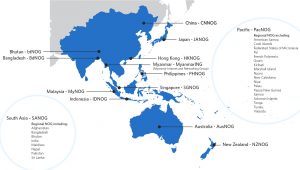
A recent post on LinkedIn by the Jakarta-based Barry Greene claimed there were three types of network engineers: “…the clued in engineers, the engineers who want more clue but are stuck, and the clueless engineers.”
What is a ‘clued-in’ engineer? I think it is someone who is informed, up-to-date and connected in their field.
The post went on to say: “The “clued in” engineers know they cannot be an expert at everything. They use their network of connections to increase their knowledge and skills … They interact at operations meetings and constantly seek to learn from each other … Then there are the clueless network engineers. These engineers live in their bubble. They do not interact with their peers. They build kingdoms inside their network. They demand their vendors do everything for them. … The third category is the engineers who want more, but are not sure how to gain access.”
For those engineers wanting to get clued in, the article recommended the North American Network Operations Group (NANOG) and more generally engagement with your local NOG community (wherever you may be).
While I’m in no position to endorse or agree with this assessment of network engineers, the article did help highlight an exciting trend here in the Asia Pacific. Of the 56 economies in the region, 13 of them now have NOGs: Australia (AusNOG); Bangladesh (bdNOG); Bhutan (BtNOG); China (CNNOG); Hong Kong (HKNOG); Indonesia (IDNOG); Japan (JANOG); Malaysia (MyNOG); Myanmar (MyanmarING); New Zealand (NZNOG); Palau (PWNOG); Philippines (PHNOG); Singapore (SGNOG); and there are two sub-regional NOGs; in the Pacific (PacNOG) and in South Asia (SANOG).
Cambodia and Thailand are joining the NOG community this year, and discussions are underway in India and Pakistan, bringing to 19 the number of NOGs in the Asia Pacific.
It’s an active, growing and collaborative community ranging from the very well established and technically strong NOGs of Japan, Australia, New Zealand and China to the newly formed NOGs in Bangladesh, Bhutan, and Myanmar. Despite this apparent diversity, the NOGs of the region share many common characteristics perhaps best captured by SGNOG which describes itself as “a venue to share and learn from each other, thereby fostering greater collaborations at working level” … that is “non-profit and organization-neutral” … and … “loosely structured and run by volunteers.” These features are shared by almost every NOG in the region, helping to make them not only sustainable but also relevant and connected.
Most importantly, this vibrant community helps keep the network engineers of the Asia Pacific clued in and informed. It’s their community – developed, operated and guided by them. If your economy doesn’t already have a NOG, then perhaps it’s time it got one. APNIC actively supports and engages the NOG community wherever it’s needed by providing sponsorships and training, as well as giving technical presentations on the services it provides to its members – many of whom are also NOG members.
The views expressed by the authors of this blog are their own and do not necessarily reflect the views of APNIC. Please note a Code of Conduct applies to this blog.


Very nice sumup of the region’s NOG situation